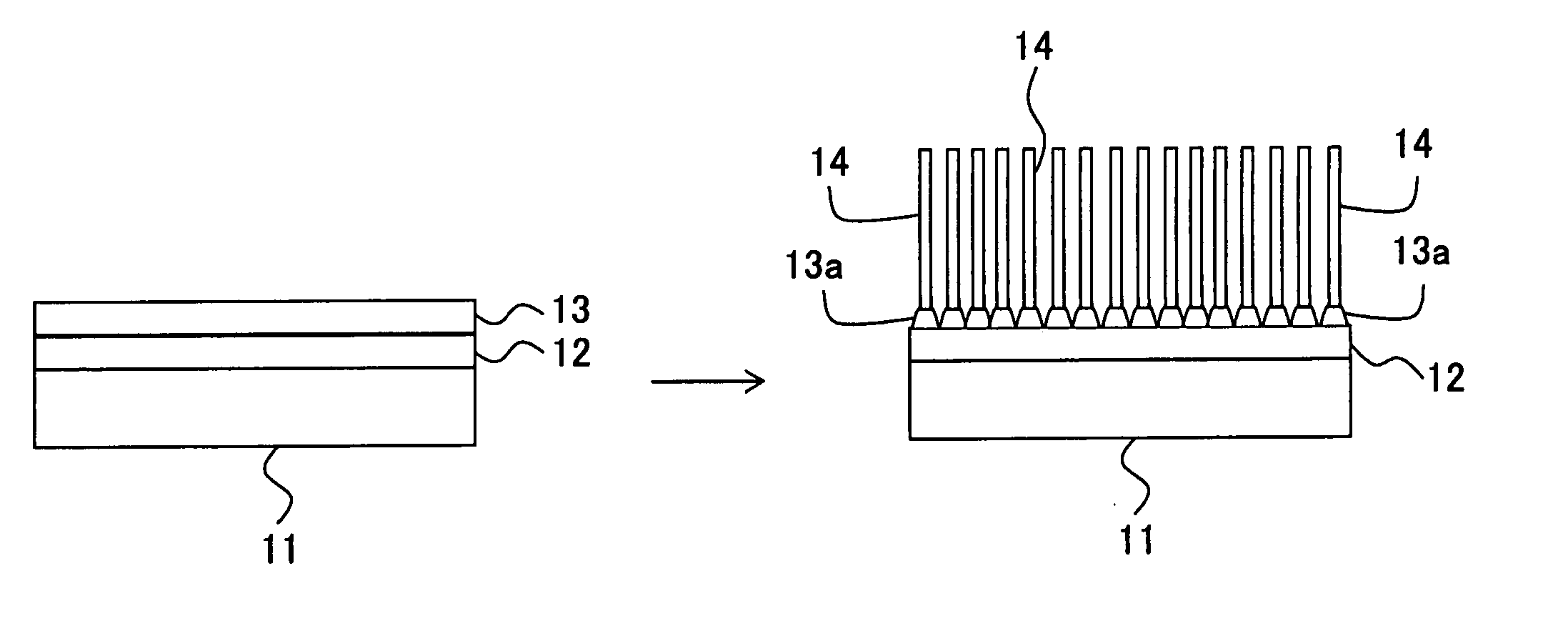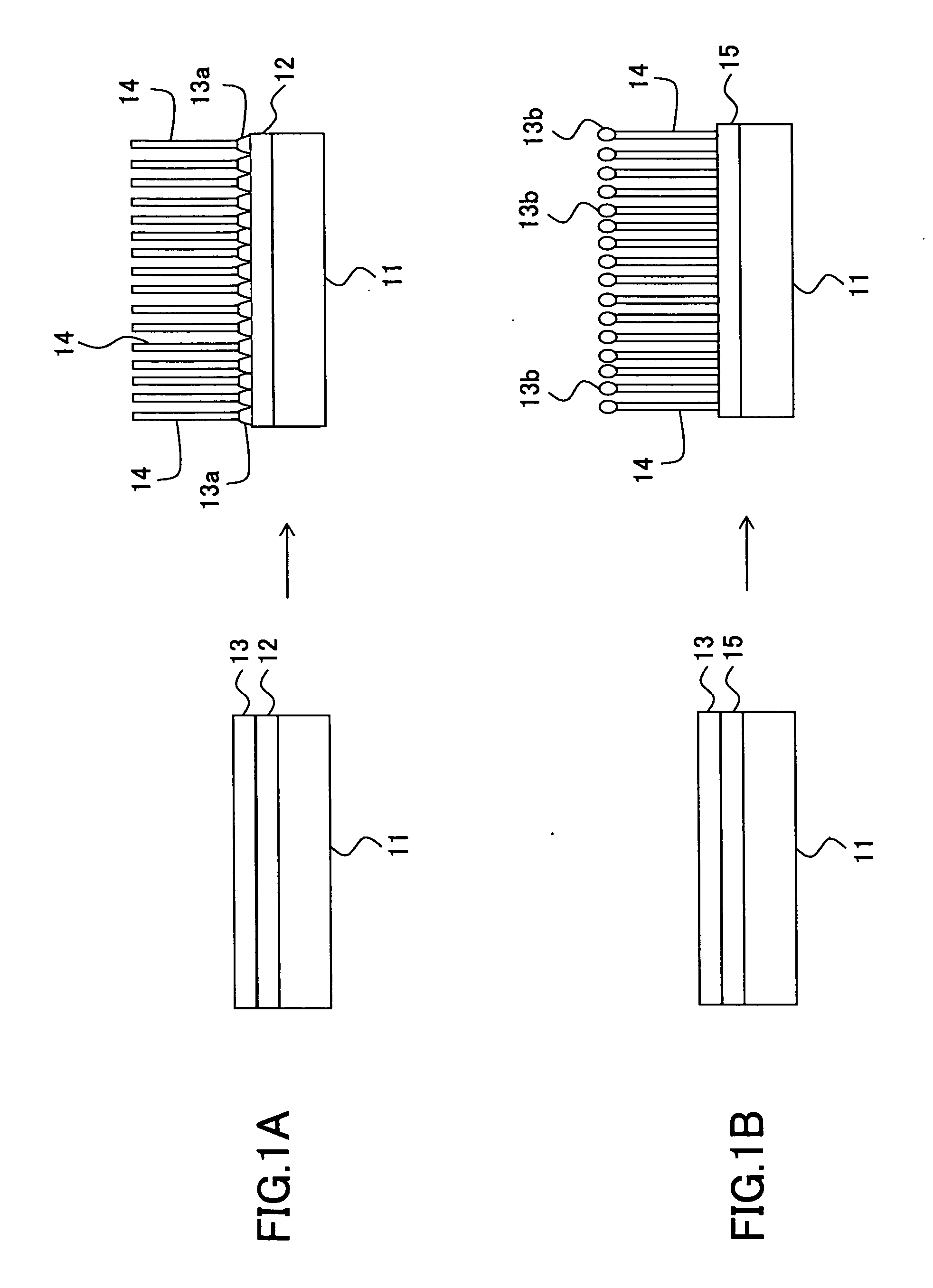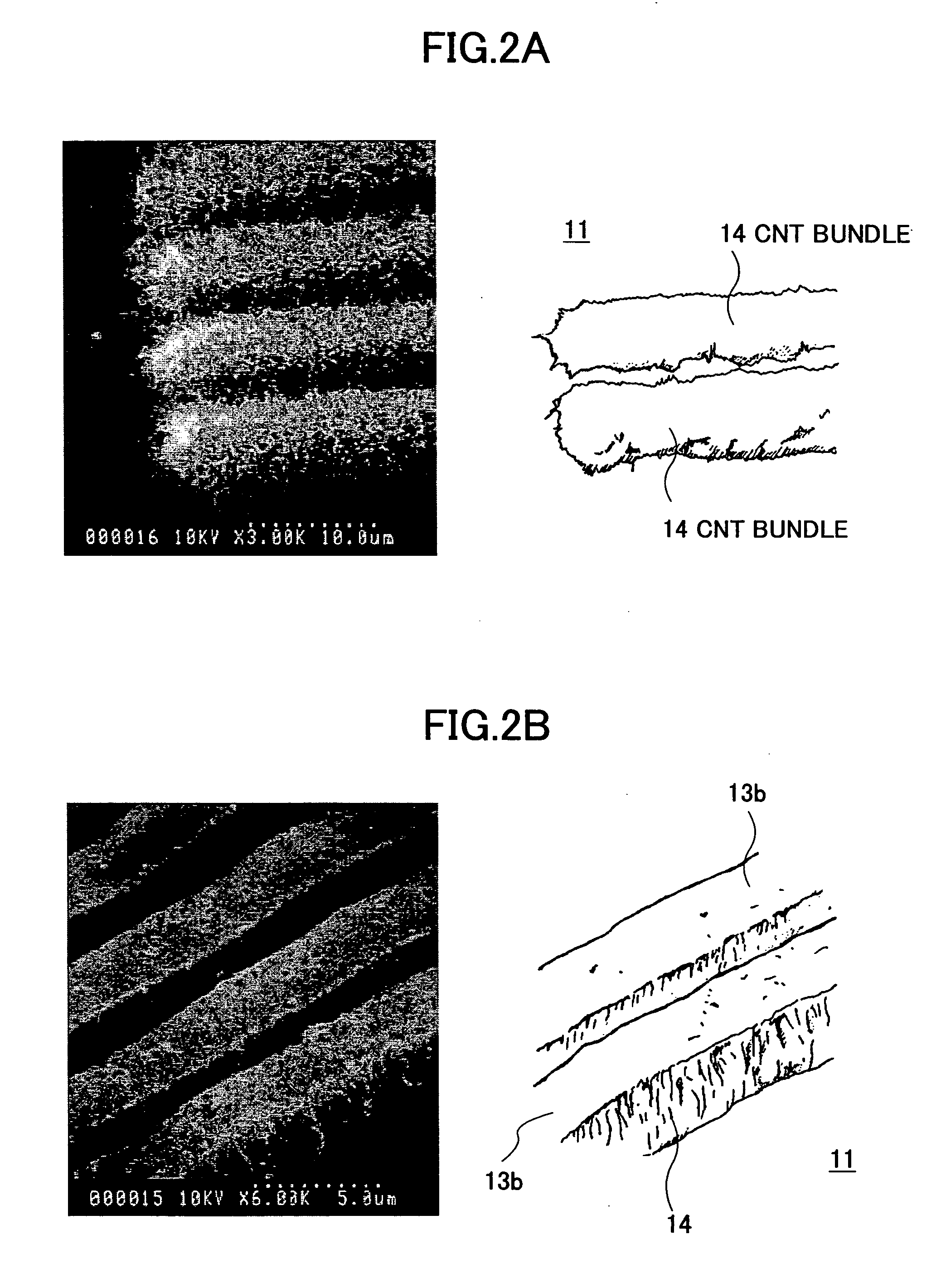Semiconductor device and method of manufacturing the same
a technology of semiconductor devices and semiconductor devices, applied in semiconductor devices, semiconductor/solid-state device details, electrical apparatus, etc., can solve the problems of insufficient control of the growth mode of carbon nanotubes, the disadvantage of semiconductor devices in terms of production cost and reliability, and the remaining catalyst metal such as fe or co may be a problem in some semiconductor devices
- Summary
- Abstract
- Description
- Claims
- Application Information
AI Technical Summary
Benefits of technology
Problems solved by technology
Method used
Image
Examples
first embodiment
[0051] [First Embodiment]
[0052] In this embodiment, a semiconductor device having contacts formed of quality carbon nanotubes that are selectively formed at low temperature is disclosed.
[0053]FIG. 3 is a sectional view of part of a semiconductor device 20 according to the first embodiment of the present invention.
[0054] Referring to FIG. 3, the semiconductor device 20 includes a substrate 21 such as a silicon substrate, a contact 29 formed on the substrate 21, an alloy layer 25 and an interlayer insulating layer 28 that are formed in the region other than the contact 29, and an interconnection part 30 that is formed on the interlayer insulating film 28 so as to be in contact with the surface of the contact 29. The contact 29 is composed of a growth mode control layer 22, a particulate catalyst layer 23a, and carbon nanotubes (CNTs) 26 grown upward from the particulate catalyst layer 23a, which serves as a nucleus of growth. In the semiconductor device 20, an active layer (not grap...
second embodiment
[0077] [Second Embodiment]
[0078] In this embodiment, a semiconductor device with a contact formed of quality carbon nanotubes of high density is disclosed. According to the second embodiment, a protection film is formed on the surface of a catalyst layer, and the protection film is removed immediately before causing the carbon nanotubes to grow so as to prevent a decline in the catalytic function of the catalyst layer during a manufacturing process.
[0079]FIG. 6 is a sectional view of part of a semiconductor device 40 according to the second embodiment of the present invention. In FIG. 6, the same elements as those described above are referred to by the same numerals, and a description thereof is omitted.
[0080] Referring to FIG. 6, the semiconductor device 40 includes the substrate 21 such as a silicon substrate, the growth mode control layer 22 formed on the substrate 21, a contact 43 formed on the growth mode control layer 22, and the interconnection part 30 formed on the contact...
third embodiment
[0101] [Third Embodiment]
[0102] In this embodiment, a semiconductor device including a via composed of carbon nanotubes formed selectively on an interconnection part is disclosed.
[0103]FIG. 9 is a sectional view of part of a semiconductor device 60 according to the third embodiment of the present invention. In FIG. 9, the same elements as those described above are referred to by the same numerals, and a description thereof is omitted.
[0104] Referring to FIG. 9, the semiconductor device 60 includes a first interlayer insulating film 28-1, a first interconnection part 30-1 formed on the first interlayer insulating film 28-1, a growth mode control layer 61 formed on the first interconnection part 30-1, a via 62 formed selectively on the growth mode control layer 61 so as to be electrically connected to the first interconnection part 30-1, a second interlayer insulating film 28-2 formed in the region other than the region of the via 62, and a second interconnection part 30-2 formed on...
PUM
| Property | Measurement | Unit |
|---|---|---|
| temperature | aaaaa | aaaaa |
| thickness | aaaaa | aaaaa |
| resistance | aaaaa | aaaaa |
Abstract
Description
Claims
Application Information
 Login to View More
Login to View More - R&D
- Intellectual Property
- Life Sciences
- Materials
- Tech Scout
- Unparalleled Data Quality
- Higher Quality Content
- 60% Fewer Hallucinations
Browse by: Latest US Patents, China's latest patents, Technical Efficacy Thesaurus, Application Domain, Technology Topic, Popular Technical Reports.
© 2025 PatSnap. All rights reserved.Legal|Privacy policy|Modern Slavery Act Transparency Statement|Sitemap|About US| Contact US: help@patsnap.com



